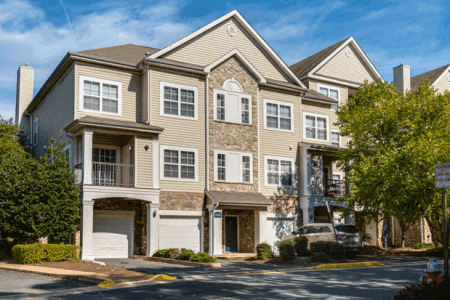
Green bond proceeds will be used to help fund one of CenterPoint’s most recent sustainable landmark projects, CenterPoint Landing at Oakland Seaport, in Oakland, California. The 466,000-square-foot (43,000 sq m) facility recently received Leadership in Energy and Environmental Design (LEED) Silver Core & Shell certification using sustainability strategies to reduce carbon dioxide emissions, save energy, improve indoor air quality, and use water efficiently. (Centerpoint Properties)
The appetite for environmental, social, and governance (ESG) investing continues to soar, with record inflows amid the pandemic. Real estate firms are now offering more opportunities for those investors to place their capital. “Green bonds” in particular have risen in popularity dramatically over the decade, from what ULI considered an emerging trend a few years ago to a mainstream investment opportunity in 2020.
Green bonds are standard bonds with specified proceeds going to fund projects that have positive environmental or climate benefits, or both. According to the Climate Bonds Initiative, the majority of green bonds issued are “use of proceeds” or asset-linked: proceeds from these bonds are earmarked for green projects but are backed by the issuer’s entire balance sheet.
From “Emerging” Trend to Mainstream Financial Vehicle
Over time, the real estate market’s interest in and acceptance of green bonds have evolved from hesitancy to certainty.
The financial innovation section of Emerging Trends in Real Estate® Europe 2015 noted, “Lenders are still unsure how to handle green property,” and, “The small but developing green bond market for real estate will gain popularity in 2015, as appetite for green investments grows and more issuers get involved. . . . In the mainstream, however, eco-consciousness is patchy.”
The capital markets section of Emerging Trends in Real Estate® 2018 (United States and Canada) included a sidebar on green bonds, depicting them as a “new tool to fund energy efficiency projects, renewable energy projects, and the construction of green buildings,” and noted, “In 2016, green bonds became a significant and growing component of the overall bond market. . . . In 2017, analysts expect the green bond market to more than double.”
The real estate capital flows section of Emerging Trends in Real Estate® Asia Pacific 2021 included a segment on the increasing prevalence of green bonds: “As increasing numbers of institutional investors look to issue both loans and bonds for financing ‘green’ projects, the volume of such green capital in circulation has made it an increasingly mainstream option.”

WashREIT acquired the 2,113-unit Assembly multifamily portfolio in Northern Virginia and Montgomery County, Maryland, in 2019 and plans to use proceeds from the green bond to fund sustainability improvements to pursue BREEAM (Building Research Establishment Environmental Assessment Method) certification of the property and demonstrate ESG leadership in the suburban class B sector. (WashREIT)
Rising Numbers of Real Estate Firms Issuing Green Bonds
Green bonds and other sustainable finance vehicles are still booming amid the pandemic. The concept is opening up global capital for local firms in a meaningful way.
“Within the green bond market, real estate has been one of the top three biggest sectors for using proceeds from green bonds,” said Christa Clapp, partner and cofounder of CICERO Shades of Green. CICERO provides independent environmental assessments of green and sustainability bond frameworks and the issuer’s internal governance procedures. “The heart of it is ‘green labeling,’ which has gotten more attraction from investors. The demand for green-labeled financial products is far greater than the supply.”
A wide range of real estate companies are taking advantage of this movement to issue green bonds specifically for improving the sustainability of their portfolios. The following are just a few examples of real estate companies issuing green bonds in the second half of 2020:
- WashREIT, a Washington, D.C., area real estate investment trust (REIT) with $3 billion in assets under management, issued a $350 million 10-year bond;
- Federal Realty Investment Trust, a retail REIT with $6 billion in assets under management, issued its inaugural green bond pricing at $400 million for a five-year bond;
- CenterPoint Properties, a U.S.-focused industrial real estate owner and developer, issued a private placement of $250 million in long-term fixed-rate notes;
- Digital Realty Trust, a global data center REIT with $23 billion in assets under management, issued a €750 million (US$908 million) 12-year green bond, its third issuance since 2015;
- Lendlease, a globally integrated real estate and investment group, issued an oversubscribed debut $500 million seven-year fixed-rate bond;
- CapitaLand Limited, one of Asia’s largest diversified real estate groups, issued a 6.25 billion-rupee four-year green bond; and
- Vasakronan, a Swedish real estate firm and early pioneer, having issued the world’s first green corporate bond in 2013, issued seven green bonds between September and November 2020.
The Value of “Green” over Traditional Bonds
Green bonds have some additional transaction costs compared with traditional bonds because issuers must track, monitor, and report on use of proceeds. However, many issuers, especially repeat issuers of green bonds, offset this initial cost with a variety of benefits, including that green bonds
- highlight their green assets/business;
- provide a positive marketing story;
- diversify their investor base because they can now attract ESG specialist investors looking for greater impact;
- join up internal teams to do an investor roadshow—the environmental team with investor relations and other business lines; and
- opens the potential for buyers to pay a premium for the “green” label on the bond.
Real estate professionals shared some of the benefits their firms see from issuing green bonds:
- Tarun Gupta, group chief financial officer for Lendlease: “The transaction has introduced us to around 50 new investors who also share strong sustainability values. It’s been fantastic to share our story with them.”
- Elena Daniel, vice president of ESG and corporate affairs for CenterPoint Properties: “Our best-in-class corporate teams are aligned with our sustainable vision that combines efficient, modern, high-throughput buildings with long-term sustainability to benefit our customers and the communities we work in.”
- Steve Riffee, chief financial officer for WashREIT: “Not only are these certifications a way to elevate operations to the WashREIT sustainability standard, but we are raising the bar for the entire value-add multifamily sector, which has often lacked investment in sustainability and efficiency opportunities.”
Eventually the market may reach the point at which investors are asking, Why are you issuing a regular bond? Why aren’t you labeling it green? That could be quite a tipping point.


![Western Plaza Improvements [1].jpg](https://cdn-ul.uli.org/dims4/default/15205ec/2147483647/strip/true/crop/1919x1078+0+0/resize/500x281!/quality/90/?url=https%3A%2F%2Fk2-prod-uli.s3.us-east-1.amazonaws.com%2Fbrightspot%2Fb4%2Ffa%2F5da7da1e442091ea01b5d8724354%2Fwestern-plaza-improvements-1.jpg)


